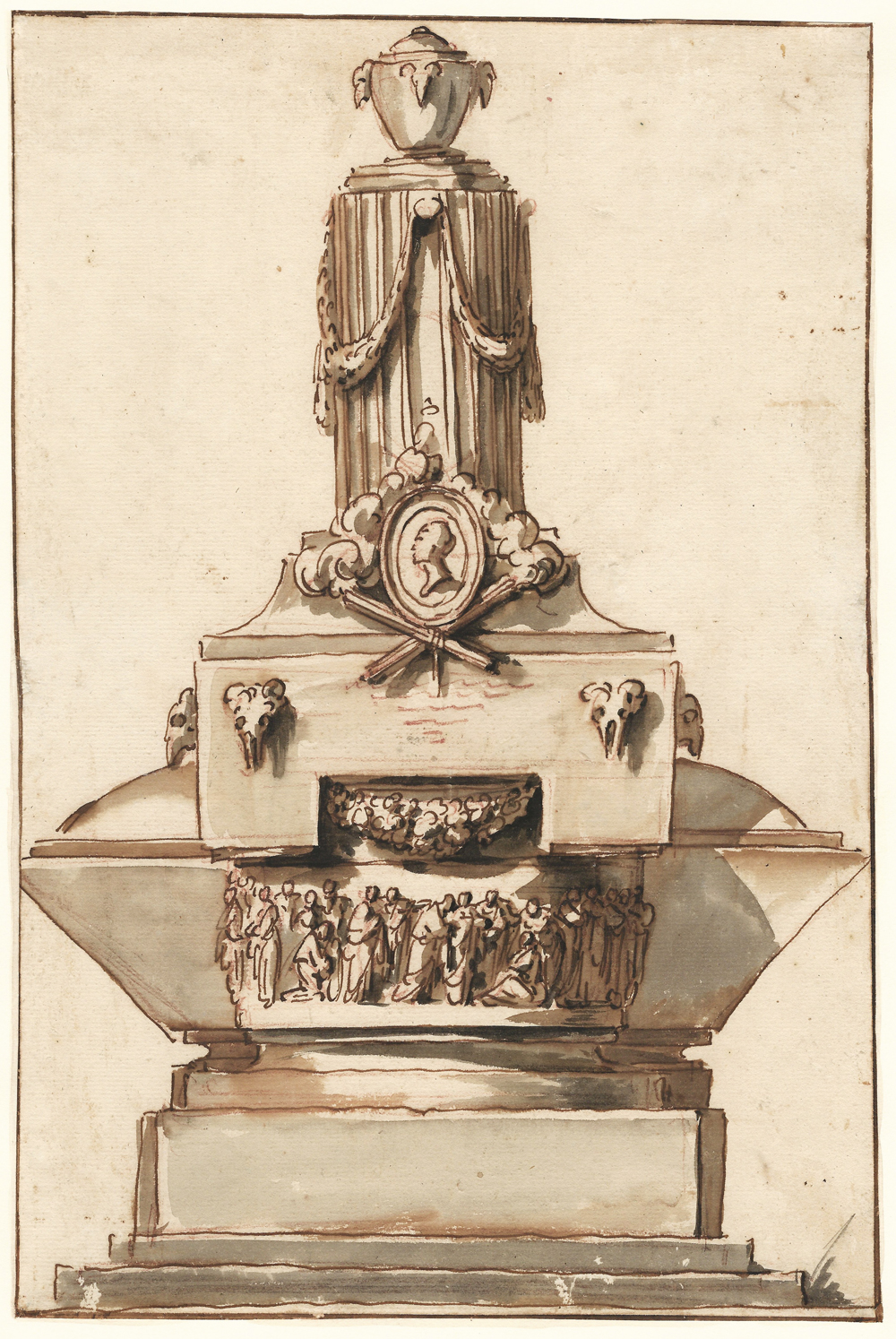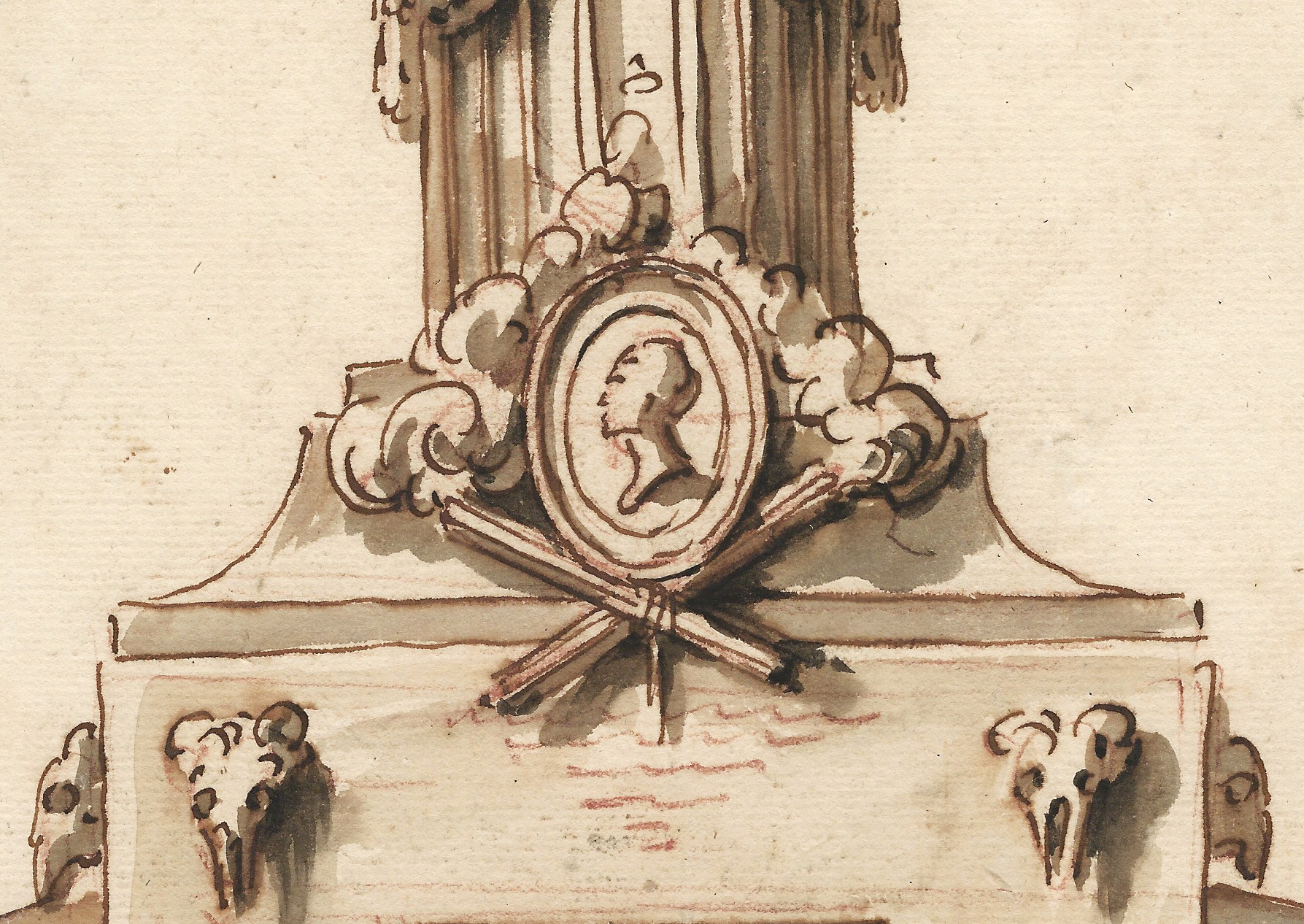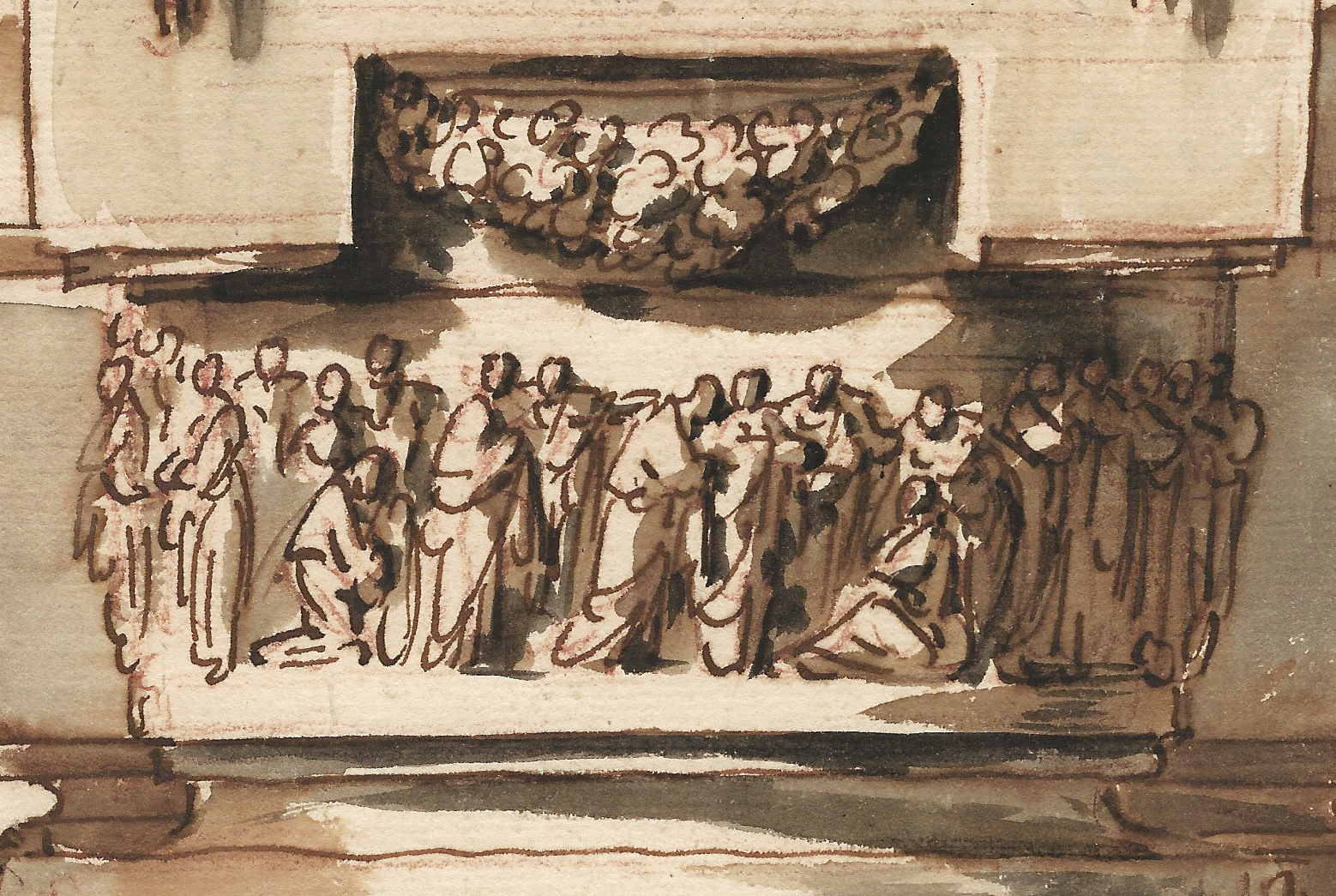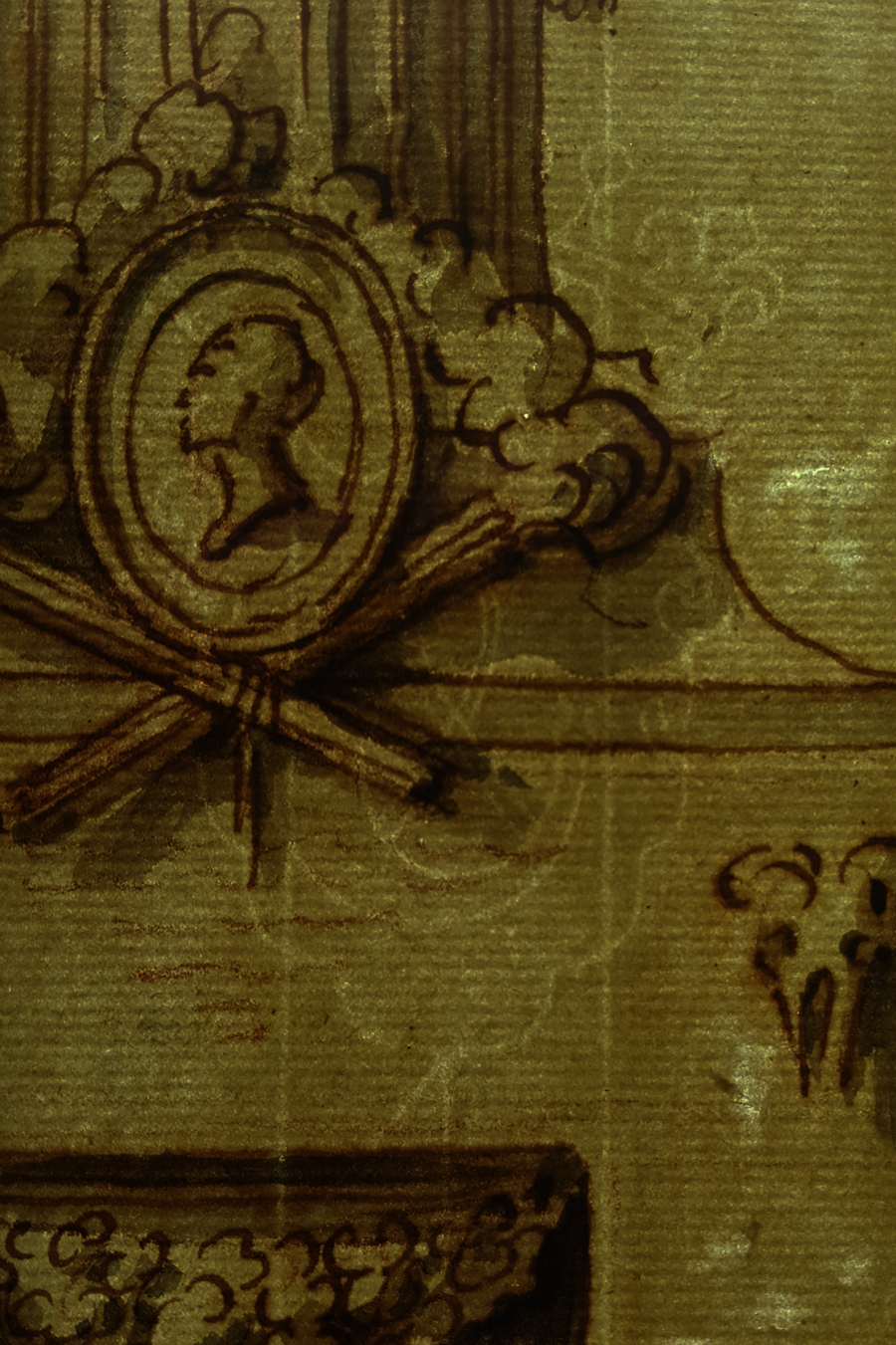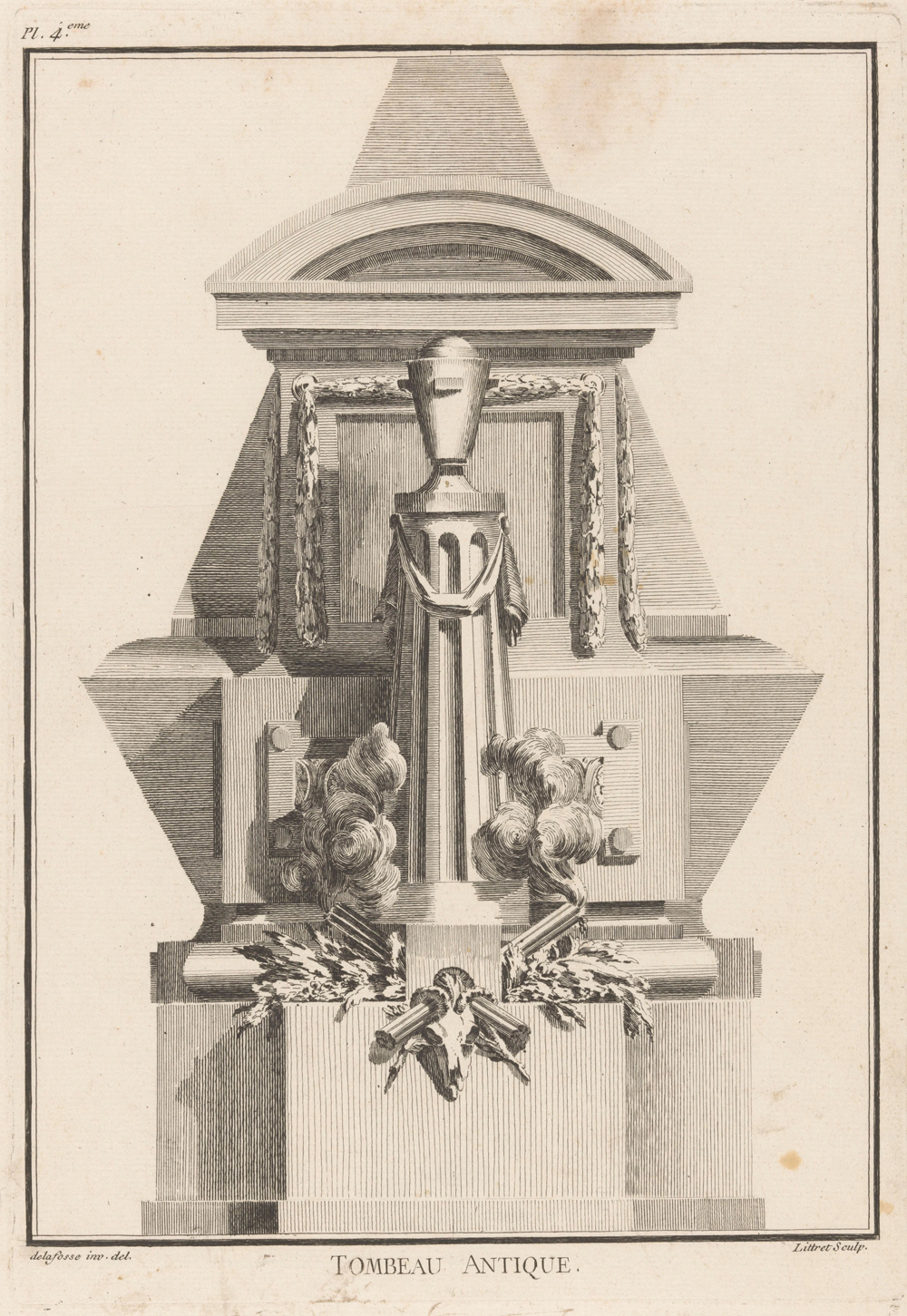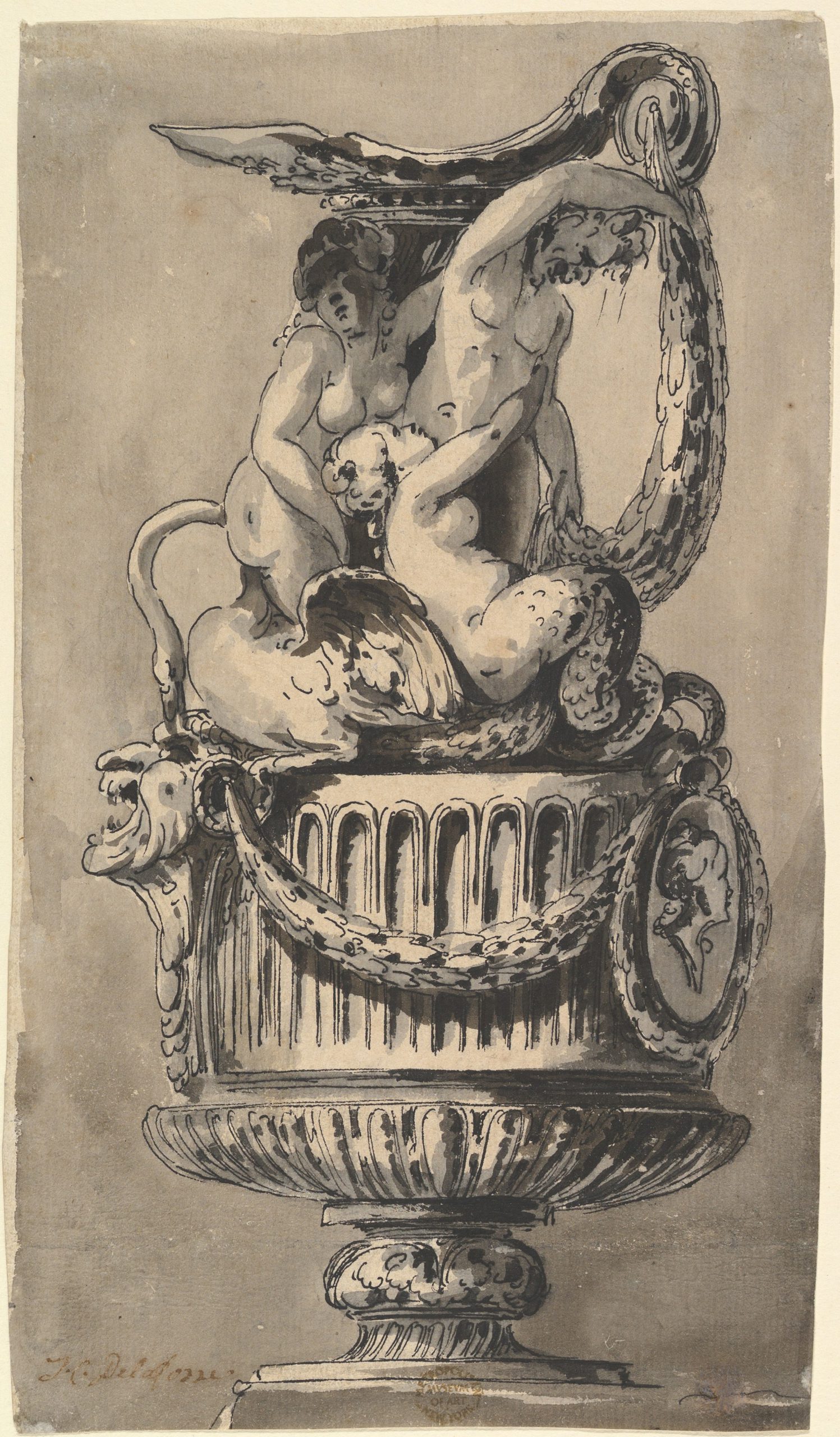JEAN-CHARLES DELAFOSSE (Paris 1734 – 1789 Paris)
Jean-Charles Delafosse (Paris 1734 – 1789 Paris)
Design for a Tomb Monument
Red chalk, pen and brown ink, brown and grey wash, watermark posthorn in shield, brown ink framing lines, 348 x 233 mm (13.7 x 9.2 inch)
Inscribed ‘Delafosse’ in a 19th-century hand on the verso of the partially preserved mount with framing lines in black ink and green wash
Provenance
~ Saam Nijstad and Lily Nijstad-Einhorn, ‘The Unicorno Collection’, inv. no. N 256; their sale, Sotheby’s, Amsterdam 19 May 2004, lot 163, repr. (as attributed to Jean-Charles Delafosse)
~ Private collection, The Netherlands
Exhibited
Ingrid Brons and Charles Dumas (eds.), Grenzeloos Goed. Tekeningen uit de Unicorno Collectie, The Hague (Haags Historisch Museum) 2001, cat. no. 13, p. 36, repr. (as Jean-Charles Delafosse, ‘without doubt’)
Literature
Charles Dumas and Robert-Jan te Rijdt, Kleur en Raffinement. Tekeningen uit de Unicorno collectie, exh. cat. Amsterdam (Rembrandthuis) 1994, pp. 14-15, fig. 8 (as Charles de la Fosse)
***
Jean-Charles Delafosse was born in Paris during the flowering of the Rococo, and lived until the Neoclassical style was about to evolve into Directoire under Napoleon. His career therefore was the birth and entire development of the Louis XVI style, from the Transitional phase of the late 1750s and heavy goût grec of the 1760s to the lighter touch of the last quarter of the century.
He was apprenticed in a sculptor’s workshop and went to work as an architect, engraver and ornemaniste, in 1774 becoming a member of the Académie de Saint-Luc.1 Delafosse was greatly influenced by Piranesi, whose drawings and prints he studied. He produced numerous pattern books and collections of prints, some of which were intended as designs for actual objects, whereas other were pure fantasies of ornamental choreography. His influence is apparent in many of the buildings and applied arts of the later eighteenth century – not only in France, but elsewhere in Europe. His most influential work was his Nouvelle Iconologie Historique, published in Paris between 1767 and 1785.
Delafosse’s drawings, especially his most spirited designs, can be very spontaneously sketched and ‘painterly’ in nature, while his more practical designs are meticulously drawn and finished, since these were intended to be followed by craftsmen. The present powerful and large sheet falls in the first category. Large numbers of drawings by Delafosse are preserved in the library of the Musée des Arts décoratifs in Paris and in the Kunstbibliothek in Berlin.2 It has been observed that Delafosse seems to have had a preference for funerary architecture.3
Our drawing can be compared by an 1771 engraving by Claude Antoine Littret de Montigny after Delafosse (see fig.).4 A design for an ornamental ewer by Delafosse in his painterly style is in the Metropolitan Museum in New York).5
SOLD
1. For the artist, see: J. Cabelle Ahn, ‘Ruins of Iconologie: redefining architecture in Jean-Charles Delafosse’s desseins', Athanor, XXXII, 2014, p. 53.
2. E. Berckenhagen, Staatliche Museen Preussischer Kulturbesitz. Die Französischen Zeichnungen der Kunstbibliothek Berlin, Berlin 1970, pp. 338-43.
3. G. Levallet, ‘L’ornemaniste Jean-Charles Delafosse’, Gazette des Beaux-Arts 71 (1929), vol. I, pp. 167.
4. Entitled ‘Tombeau Antique’, etching and engraving, 314 x 218 mm, from the series IIe Volume de l’Oeuvre de J. Ch. Delafosse (…), Rijksmuseum, Amsterdam, inv. no. RP-P-1964-4146.
5. Pen and black ink, grey wash, 244 x 141 mm, inv. no. 80.3.664; Mary L. Myers, French Architectural and Ornament Drawings of the Eighteenth Century, exh. cat. New York (The Metropolitan Museum of Art), 1991, cat. no. 32, p. 57, repr.
